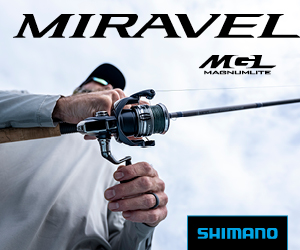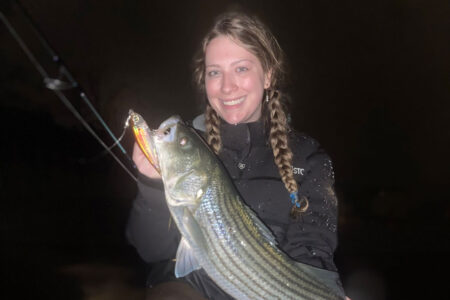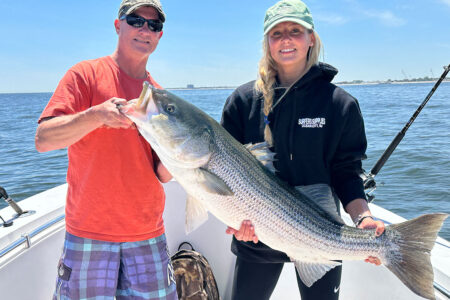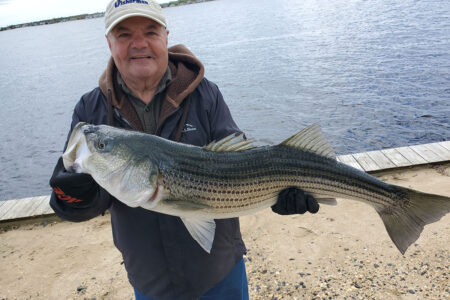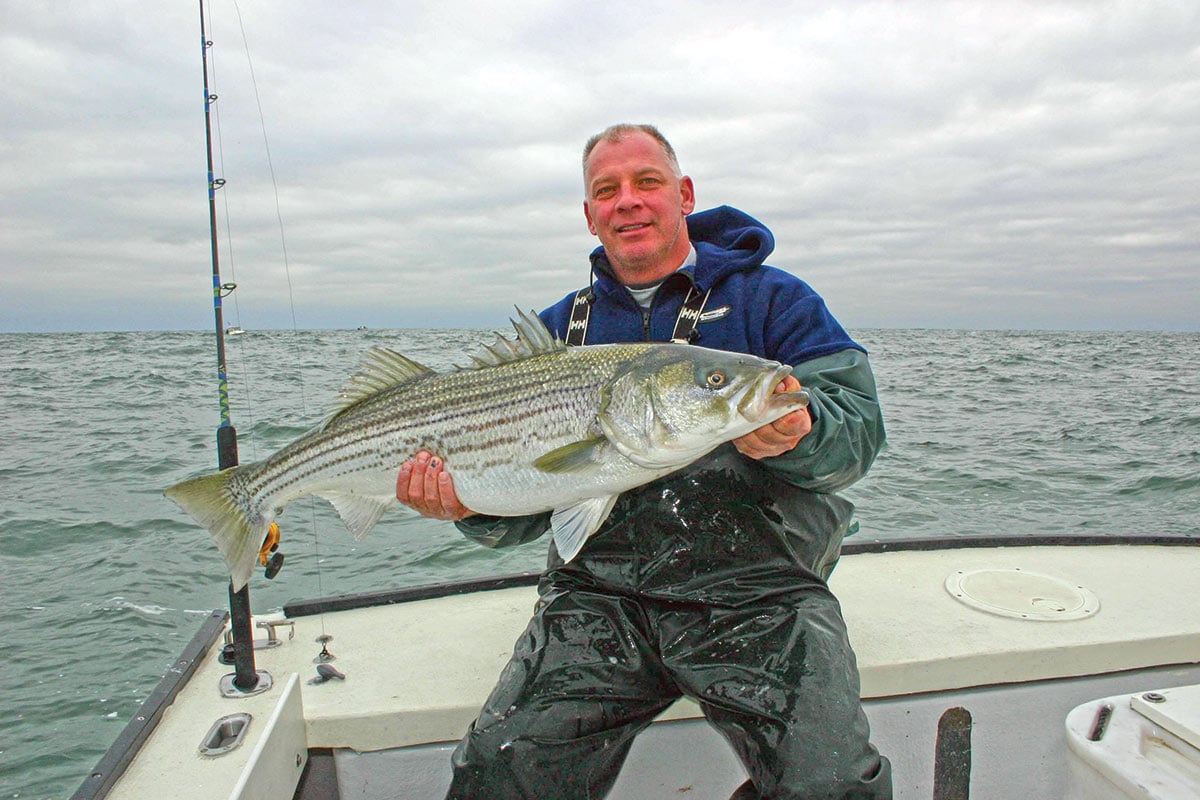
Recreational anglers can play a major role in reducing catch and release mortality.
Given some of the data emerging from the latest striped bass assessment, it’s probably in everyone’s best interest to reexamine the way we handle striped bass that are destined for release. According to ASMFC, preliminary data revealed that the largest source of striped bass mortality, a staggering 48 percent, resulted from fish released by recreational anglers. That figure takes into account mortality resulting from commercial and recreational harvest, with recreationals harvesting 42 percent and commercials just 10 percent. Keep in mind that the 48 percent number is driven by the overwhelming number of striped bass released in the first place, many because anglers elect to practice catch & release, and others due to size and bag limits. For the record, I’m not entirely sold on those numbers since I believe the number of poached (recreational and commercial) untagged and unreported fish could skew those percentages to a large degree.
On the positive side, most fisheries managers assume that the actual mortality of bass released by recreational anglers is around 10 percent, meaning that 90 percent of those fish survive. That 10 percent figure might be very conservative given higher mortality rates attributed to certain fisheries such as the summer fishery in Chesapeake Bay where some biologists estimate angling mortality during warm water periods may be 25 percent or more. Here in the Northeast, that 10 percent figure might be more accurate, but that does not mean that we are not part of the problem and should not be trying to improve on the release mortality rate. Recreational anglers owe it to themselves and the resource to do all they can to ensure that the fish they release survive. Catch and release, whether by choice or mandated by regulation, allows other anglers the opportunity to enjoy the thrill and satisfaction that comes with catching a trophy gamefish, and many anglers have discovered that there is even more satisfaction in returning a fish to the water, as there is in catching one.
Reducing Release Mortality
There are some frequently used techniques that do not lend themselves well to a healthy release. The time honored snag and drop approach used for culling big stripers from bunker schools has often been criticized for the potential damage the large trebles can do to a striper. Fishing with bait for stripers, whether it is chunks of bunker or clams, ratchets up the risk of gut hooked fish when using standard J-hooks. Stripers are especially susceptible to clam baited hooks, which they often suck down like a kid eating his favorite candy. Why anyone who fishes clams for stripers does not use a circle hook is beyond comprehension. Some state agencies have been exploring requiring the use of circle hooks for bait fishing. Perhaps it’s time to get such a common sense regulation on the books here in the Northeast.
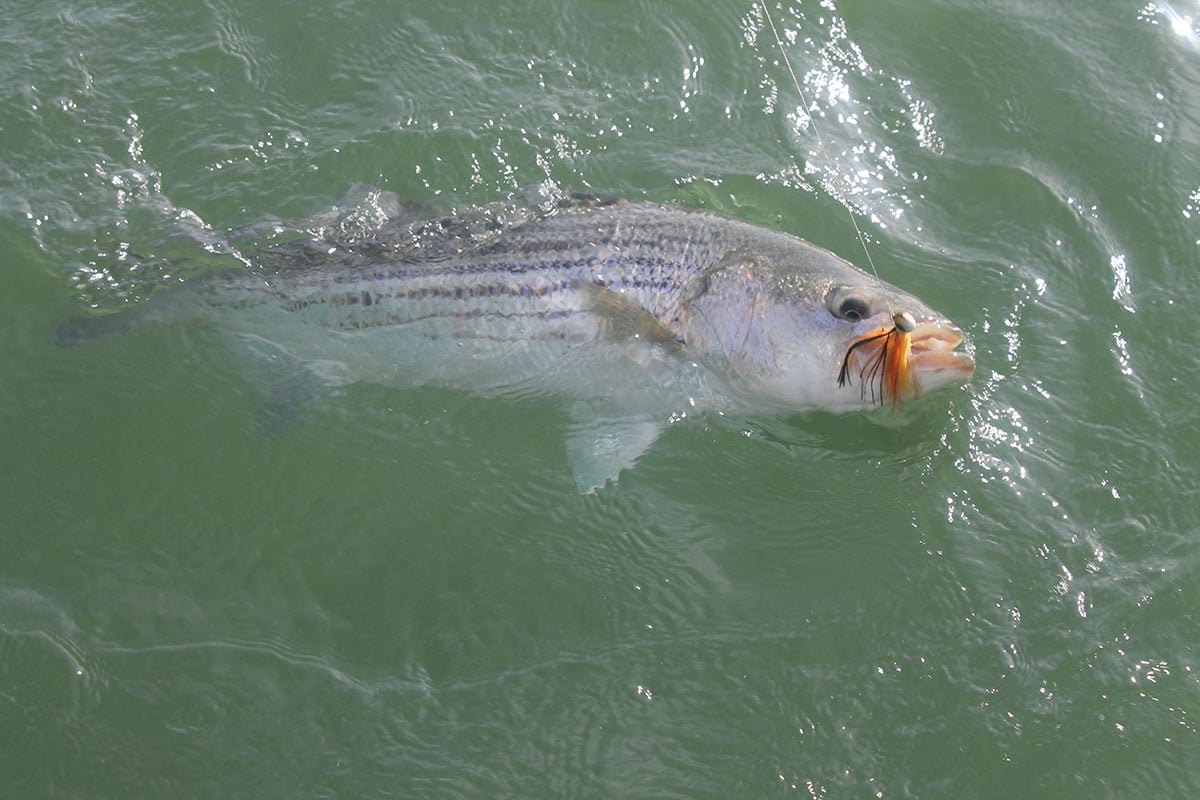
Now, with the Atlantic Marine Fisheries Commission (ASMFC) on the verge of further reducing striped bass mortality, and with the prospect of a coast wide one fish bag limit across the board, it becomes even more important that all anglers do what they can to ensure a healthy release. Many anglers are under the mistaken impression that because a fish swims off in an apparently healthy state, that it will survive. The more a fish is handled and the more time that fish spends out of the water, the better the odds that you are impacting on the chance for that fish to fully recover. I have witnessed many well intentioned anglers return fish to the water that have little chance of survival. I once watched from a distance as a surfcaster beached a striper well into the 30-pound class. The surf was up with a long wash, and by the time he took the fish back to his truck for weighing and then snapping a series of photos, the fish had to be out of the water for a good five minutes. As he carried the fish back toward the water, I thought he intended to wash the sand off before placing the fish in his cooler. Instead, he walked halfway to the water as the wash receded and proceeded to drop the fish on the sand, expecting I guess that the next wave and subsequent wash would return the fish safely to sea. Needless to say, the fish was rolled around in the wash and was last seen drifting west in the crashing surf.
Releasing any fish that you don’t plan on eating is admirable, but in a case like the above, nothing good was accomplished other than feeding crabs. That fish had zero chance of survival right from the start. First of all, trying to release a big striper in heavy surf isn’t easy. Big stripers often need to be resuscitated, which means being able to get in the water beyond the soupy mix of sand and shells, and working water through the fish’s gills. Without reviving the fish, it would most likely wallow on its side and be sucked out by the undertow, with little chance of survival.
Time Out of Water
Regardless of whether you fish from a boat or the surf, there are some critical factors revolving around the release of all fish. Time out of water is probably the most critical and should be kept to an absolute minimum. There have been several studies done that reveal just how critical it is to return fish to the water as quickly as possible. One done on trout by Queen’s University in Ontario, Canada revealed just how damaging subjecting fish to air (time out of water) can be. Trout in an exhausted state (caught on hook and line) saw only a 28% survival rate when exposed to air for 60 seconds. The survival rate jumped to 63% in fish that were out of the water for 30 seconds, and to 88% for those not removed from the water. Some saltwater species, including striped bass, may have a higher tolerance, but these results provide a good barometer for the importance of getting fish back into the water quickly.
Obviously then, the ideal scenario for achieving optimum catch and release mortality is to keep fish in the water when unhooking them. For surf fishermen, this is possible when wading calm back bay or inlet areas, and for those fishing from small boats, or boats with low enough freeboard to allow you to reach down and unhook a fish while it is still in the water. Single hook lures such as bucktails make unhooking a snap, and there is usually no need to even touch the fish. Just slide your hand down your leader, grab the head of the lure, and a quick twist will usually set the fish free. Having a good pair of pliers on you or within easy reach goes without saying. The leverage provided by pliers, as well as the protection they provide from toothy blues, make them a valuable asset in unhooking fish quickly.
As I noted earlier, the popularity of snag and drop fishing when working around bunker schools can result in complications from the large weighted snag hooks used by some anglers to snag the bunker, which is then inhaled by a striper. The technique works because stripers are quick to pick out the burdened and crippled baitfish, but it may impact the fish’s ability to survive. A better option is to get the bunker back to the boat and re-hook it with an 8/0 to 10/0 circle hook attached to a fish-finder rig or otherwise weighted to get the baitfish down near the bottom and below the main school of bunker. Clipping the tail or fins of the baitfish will give it that crippled effect and make it more appealing to a big striper.
Hook Removal
ARC Dehooker (the ARC stands for Aquatic Release Conservation) manufactures a number of dehooking devices for everything from panfish to sharks and tuna. They are a great asset in helping to avoid removing fish from the water, and handling fish unnecessarily. Their Sportsman 16-inch inshore Dehooker is ideal for unhooking small stripers, while the 24- and 34-inch offshore models are well suited to big stripers, especially where higher gunnels require a longer reach to get at the hook. The 34-inch Big Game Dehooker is actually designed for releasing pelagics like sharks and billfish, but will also do the job on a 40-pound striper.
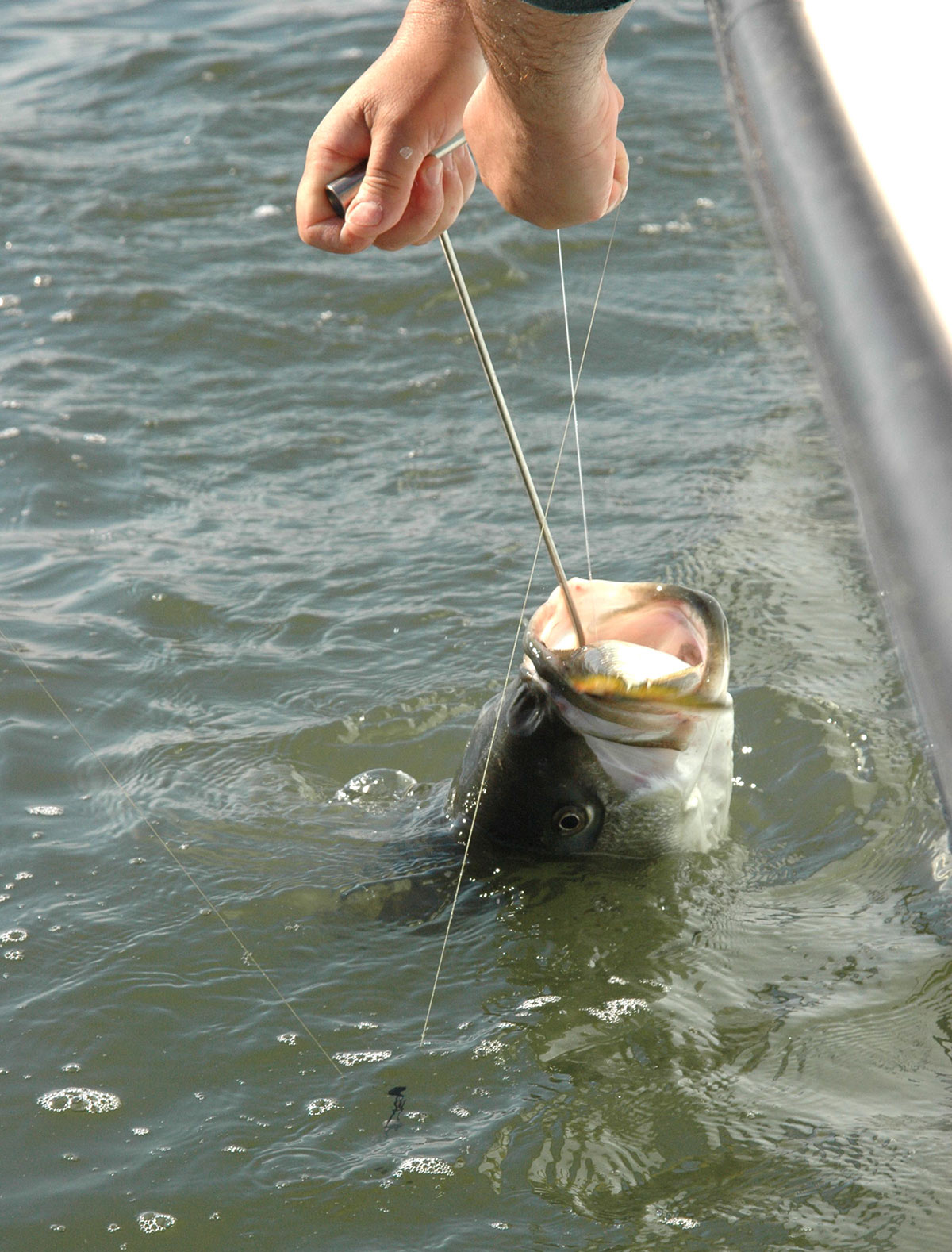
Anything we can do to expedite hook removal, minimize handling and get the fish back in the water as quickly as possible, improves the odds of survival. The use of single hooks where applicable, and always crushing the barbs of trebles can make unhooking a snap. Hook removal is amazingly easy when barbs are removed from the equation. Always use circle hooks when fishing with bait. There is no question that the use of circle hooks results in a very high percentage of lip-hooked fish and reduces mortality associated with gut-hooked fish. Why circle hooks are not required for bait fishing when targeting stripers is beyond me. Kind of seems like a no-brainer, especially when fishing baits like clams, worms, eels or bunker chunks.
If you have any intention of keeping a legal size fish that requires being measured, the minimum length should be marked off on your rod, the boat’s gunwale, or somewhere that is easily and quickly accessible. It translates into seconds measuring the fish, instead of what could be minutes spent searching for a tape measure. Also, if you have any intention of photographing your catch, you should have your phone or camera within easy reach, and it should be ready to shoot. Have an idea of where and how you want to shoot photos before landing a fish, and limit your photography to one or two quick shots to avoid leaving your catch gasping on the deck or sand.
Fish Friendly Tools
There are many situations where fish can be released without removing them from the water, but if a fish has to be landed, avoid using a net when possible. Removing a fish from the net tends to increase time out of water. The netting will also remove some of the fish’s protective slime, which it needs to fend off disease and fungus infections. Netting can also cause damage to gills and fins in some cases. Obviously, fishing from bigger boats with a lot of freeboard often requires netting a fish. Remove the fish from the net as quickly as possible and worry about getting your rig or lure untangled after the fish has been released. Companies like Frabill offer “fish-friendly” nets that minimize the loss of slime and allow for quick removal of the fish.
Avoid contact with the fish’s gills and if possible, avoid the gill area altogether. Use a thumb grip inside the fish’s lower jaw to pick it up. In the case of larger fish, use your other hand to help support the weight of the fish just forward or aft of the anal fin. Do not support the fish by its stomach. There are several tools on the market that allow you to get a secure grip on the lip, eliminating any need to handle the fish while unhooking it. One, the Boga Grip, doubles as a scale and allows you to get a weight without any additional stress on the fish. Berkley, Cuda and several other manufacturers have similar tools, some with a scale and some without. There is growing concern based on some recent studies that holding large fish up vertically, whether for a photo or weighing, can lead to some of the fish’s organs being displaced. Catch and release tournaments that score by weight might want to consider changing their format to inches. The other solution, would be to create a sling type device hung from the scale that could support a fish horizontally for weighing. There is a sling made by Ultimate Angling Fishing Tackle designed for carp fishing and sold on Amazon for just $5.95. Manufactured of fine mesh, it’s compact and lightweight, and could be a nice option for concerned anglers.
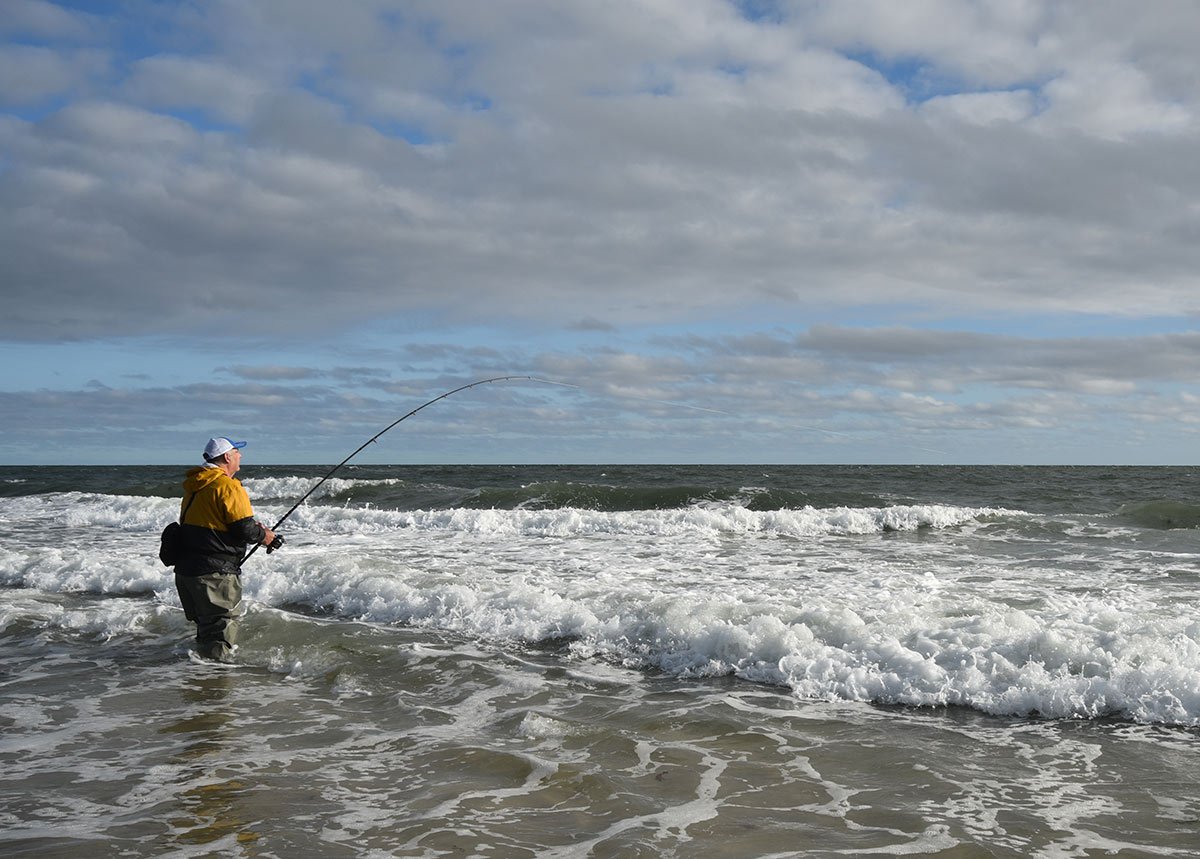
Revive Them
Most bass have to be revived when they are returned to the water, especially those over 20 pounds, which are more prone to lactic acid buildup. Avoid throwing or tossing a fish back into the water. Resuscitate the fish by moving it back and forth so that water flows through its mouth and over its gills. Do not release it until the fish is able to swim free of your grasp. In the case of fishing from boats with too much freeboard to allow resuscitating a fish, release it by propelling it head first into the water alongside the boat. The sudden rush of water through the fish’s gills is often enough to energize some fish. This is a tactic commonly employed with species such as false albacore, tuna and bonito, but will sometimes work on bass as a last resort.
Try to avoid fighting a fish to exhaustion, especially when you plan on releasing it. Using tackle that is poorly matched to the job at hand can result in unnecessarily long fights, and an overly stressed fish. These days, even light action rods are amazingly powerful, and coupled with fine diameter braided lines that allow you to fish heavier pound test and a tighter drag, it’s possible to pressure fish as much as you would with heavier tackle. Enjoy the fight but don’t “toy” with a fish that you plan on releasing.
Try as we may, there will be some stripers, especially those over 30 pounds, that will not survive, despite the best efforts to revive them. Taking some of the precautions discussed here should help keep the number of fish that can’t be released to a minimum. And while many of the factors discussed here can impact on a healthy release, the two most important keys to remember are time out of water and minimizing the handling of a released fish. Some of the hosts of TV fishing shows drive me crazy and set a bad example for other anglers by holding a fish while they explain the technique they used to catch it, or worse yet, spend minutes promoting a sponsor’s product. I can’t help but wonder how they would respond to having their head held underwater for a few minutes.
Each season sees the catch and release philosophy, especially where striped bass are concerned, gain new converts. There is nothing wrong with taking a fish home for the dinner table – it is one of the great benefits of the fishing game – just don’t take more than you need, and please don’t kill a fish, then when you get off the boat or beach wonder what you are going to do with it.
Striped bass regulations all along the Striper Coast will ultimately result in virtually all who pursue stripers to engage in catch and release fishing. With all of these fish going back into the water, it is every angler’s responsibility to ensure that they are given every opportunity to survive.
| FISH FRIENDLY TOOLS |
|---|
|
